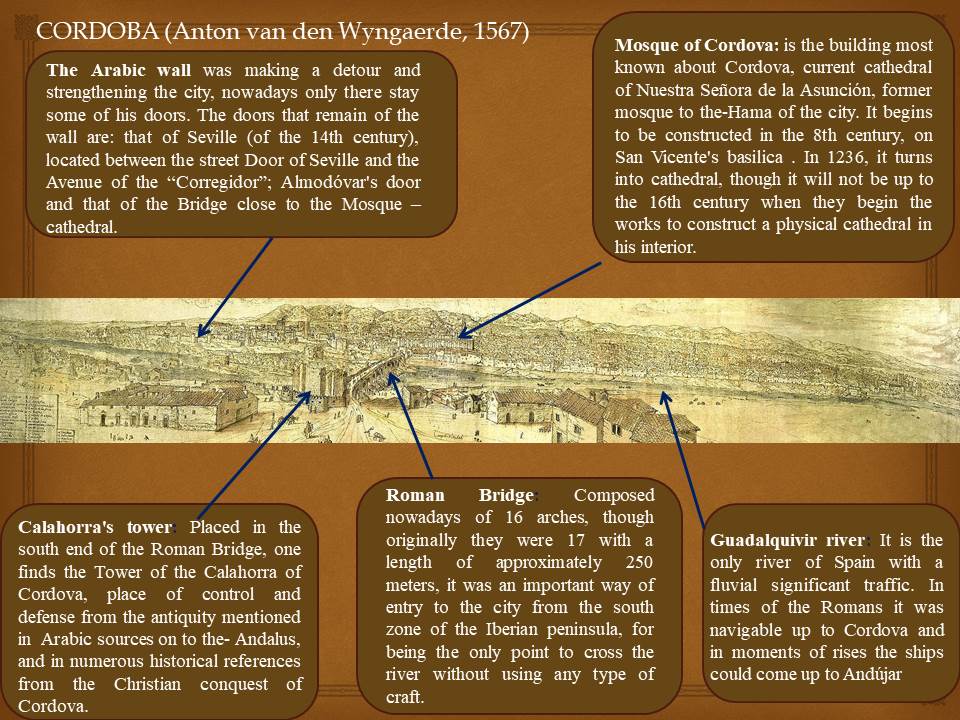This image was made in 1567 and portrays a panoramic view of Cordoba and the Guadalquivir river from the point of view of the Calahorra Tower. The painter is Anton van den Wyngaerde, who was born in Belgium, and used different techniques and materials like pen, brown ink, watercolour and thick framing lines in black ink. Now it belongs to the Victoria and Albert Museum of London, but it was formerly included in an album of 31 other views of Spanish cities.
There is a great amount of details in the representation of the houses and social activities of that time. Thanks to the river Guadalquivir, Cordoba had a good communication system with other places and its comercial power was very important during the Golden Age. The 16th century in Cordoba was characterized by being a period of economic expansion with respect to the Middle Ages after the conquest of Cordoba by Fernando III El Santo. But there is a decline at the end of the century in regards to the population, mainly due to epidemics, poor harvests and famine.
In the background it is possible to admire the mountains of Sierra Morena, so the view is incredible and represents an interesting balance between city and nature. In the foreground we can see people doing common activities. There are some peasants shepherding cows and donkeys near the bridge because the most common occupation in that period was farming.
The urban layout is irregular and the housing is enclosed by a city wall, which is typical in medieval towns. There are some buildings out of the city wall, to the other shore of the river, that can be considered the starting point for a suburban area or «arrabal». So the urban structure is divided in two sides by the Guadalquivir; on the one hand we have the city centre and the main monuments, and on the other hand there are cropfields, farms and lodges. Near of the Calahorra Tower is placed the Roman bridge over the Gudalquivir, and after crossing it, we will find the cathedral-mosque of Cordoba, which is the most important monument of the city and one of the most important in Spain.
Mario Parrilla

